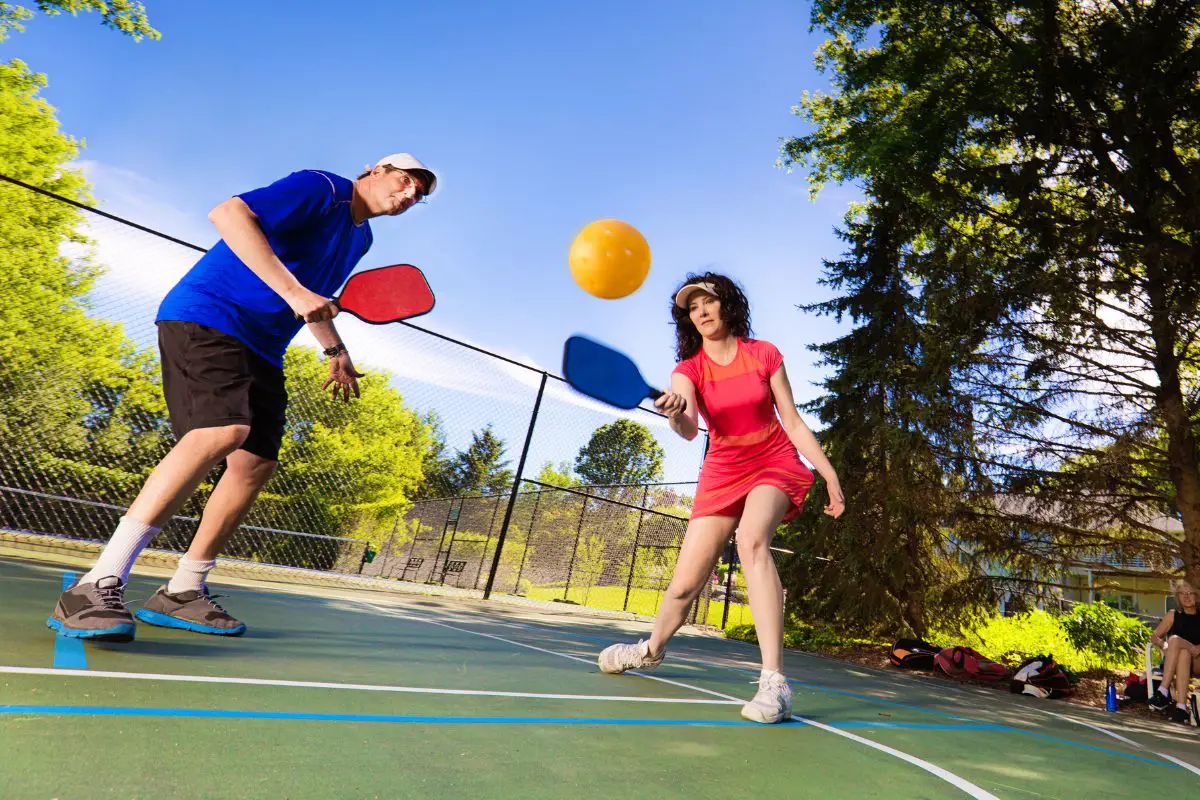Pickleball is one of the newest and most unique sports out there.
It combines the greatest parts of racket sports like tennis, badminton, and table tennis to form a super game that is extremely enjoyable.
The sport is usually played by two to four players and is perfect for people of all ages.
A significant advantage of this sport is that its rules are relatively simple and pretty easy to pick up once you’ve got the basic gist of what you’re supposed to do.
If you aren’t aware of the 5 main rules of pickleball and want to familiarize yourself with them so you can give the sport a go, this article will hopefully get you on your way.
1. The Ball Must Remain Inbounds
Like other sports that are played on a court or a field, the ball must always be inbounds to stay in play.
In simple terms, it means the ball must remain within the white lines at the side of the court when a game is in play.
Every single hit in a game of pickleball must bounce to the opponent’s side.
As a result of this rule, players have a pretty large area to land the ball on a non-serve shot (around 20 by 22-foot).
Inbounds shots in a game of pickleball occur if a ball touches the inbounds surface after it bounces.
Even if it ends up touching the line it must be somewhat inbounds once it has bounced to count.
The ball is still counted as being inbounds if it’s touched the inbound, the line, and any parts of the pickleball court that are considered to be out of bounds.
This rule gives players a fair amount of space to play the game.
It also provides more experienced pickleball players with an advantage in that they can angle their hit nearer to the boundary, making it harder for the opponent to return it.
2. A Double Bounce Must Occur
One of the most unique pickleball rules is the double bounce rule.
This is a necessity for any game of pickleball but is often one of the most overlooked rules.
After a player successfully serves the ball, the opposition must allow the ball to bounce at least once before they consider returning it.
Once they’ve hit the ball back, it must bounce on the side of the serving team before the rally can continue normally.
In layman’s terms, this rule means that the ball must bounce at least once on both sides before players can continue their turn.
The pickleball serve must bounce once on the side of the returning team.
A return shot must bounce at least once on the side of the serving team.
A player can return the ball after a single bounce or a volley.
When it comes to serving the ball and returning it, all general pickleball rules still apply.
The main benefit of a double bounce is that it prevents the points from ending too fast.

3. Serving Must Be Carried Out At The Baseline
There are a couple more regulations when it comes to serving in a game of pickleball.
One of the most important rules is that all serves must be carried out at the back line of the court, known as the baseline.
Every serve is determined by random number selection or the traditional method of a coin flip.
Each of the serves must be dropped with a single hand and then hit with an underhand from below the waistline.
This must occur without bouncing. The ball must then be served diagonally to the opposite side of the court.
A server may hit the ball with a forehand or a backhand motion, provided there is an underhand serve.
If these rules are violated, the server will have officially committed a fault.
Therefore, their serve will be surrendered to either a teammate or an opponent depending on the service sequence rules.
4. Serves Cannot Land In The No-Volley Zone
This is another crucial rule that all players must adhere to in a game of pickleball.
Once the players have observed the double bounce rule, they can start to volley the ball in a rally.
There are two seven-foot spaces on either side of the net on a pickleball court. These make up the no-volley zones, also referred to as the kitchen line.
This rule states that a player cannot enter the kitchen on a serve, including before or after completing the volley.
And if a player was to violate this rule, it’d be considered a fault against either the single player or the team as a whole.
While this rule may seem a little bit harsh, it’s super important to ensure that the game runs smoothly.
If players were allowed to volley from the no-volley zone, a lot of rallies would end prematurely with powerful and quick volleys.
5. Pickleball Games End At Either 11 Or 15 Points
A game of pickleball will traditionally finish at 11 points.
However, much like in tennis and volleyball, the winning team must achieve victory by at least two points.
If one team is at 11 points but the opposition is at 10, the game will carry on.
In this instance, the next score that can end the game would be 12. Remember: a game of pickleball is not over until a team has a two-point advantage over the other!
Some games will go to 15 points by default, but the winning score must still be by two points.
The overall ending score should be discussed beforehand by both teams.
When playing to 11 points, a team must switch the sides of the court when the first team manages to hit a total of 6 points.
If you end up playing to 21, you’ll switch sides at 8 points.
Summary
That concludes the 5 rules of pickleball. You should now be armed with the right type of knowledge to get started with the sport.
Feel free to practice whenever and wherever you can!


